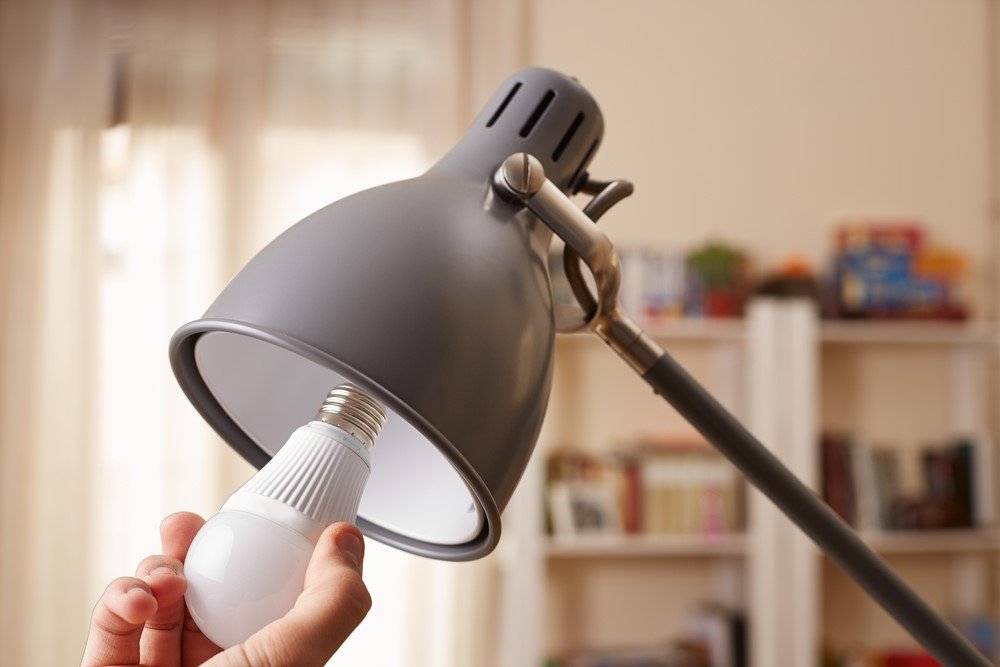Why use led light bulbs for home?

With the invention of Light Emitting Diodes (LEDs) and Compact Fluorescent Lights (CFLs), we officially entered a new era of illuminating people’s homes.
Two of the main reasons why consumers have started to pay more attention to what kind of light bulbs they are using are 1) the impact on the environment and 2) the simple desire to reduce overall energy costs.
What Are LED Light Bulbs?
LED lights have been around for quite a while – chances are you have seen them in form of very small, single bulbs in electronics, instrument panels, pen lights, and even some Christmas lights.
Now, however, the naturally very small LED lights are offered in form of regular sized light bulbs, which are nothing else but a “cluster” of small LEDs (in some cases over 150) housed inside a diffuser lens to spread the light evenly. This new generation of LED lights comes with standard bases that fit common household light frames.
There are many reasons why it makes sense to opt for the modern LED as opposed to the outdated incandescent light bulb, so let’s take a look at a few of the most important ones.
Long Life Cycle
According to Design Recycle Inc., LED’s (at 50,000 hours) last a whopping 41.6 times longer than traditional incandescent lights bulbs (at roughly 1,200 hours). (Quick tip: the cooler the immediate environment, the longer LEDs last!)
Even though LED bulbs are much more expensive (on average $30 as opposed to $1.25 per incandescent light bulb), it still pays off to use them in the long-term. That’s because, while costing 24 times as much, an LED light lasts up to 41.6 times longer and, after doing the math, will cut your long-term light bulb costs almost in half.
Energy-Efficient Money Saver
In addition to saving you money at the time of purchase, LED lights will also save you money big time when it comes to your electricity bill. They use only 2-17 watts in order to light up the room at the same level as a 45 watt incandescent light bulb currently would. And, like with all other light bulbs, you can chose between different brightness levels when shopping at your local hardware store.
Durability
While incandescent light bulbs as well as CFLs can break very easily, LEDs are surprisingly durable and resistant against external shocks like “bumping” and “jarring” because they are solid and do not have a filament.

No Heat
Once again we have to compare LEDs to old-school incandescent light bulbs because the difference here is striking. While incandescent bulbs produce on average of 85 BTUs per hour, LED’s emit merely 3.4 BTUs per hour. This number is so small that, in other words, the LED light bulb stays cool during operation.
So the danger of you (or your children) burning your skin does not exist with LEDs. Another factor to consider is that you will indirectly save some money on air-conditioning costs as your LED lights will not contribute to increasing temperatures inside your home.
Light Color Choices
Until recently, many people complained about the bright, unnatural colors of LED lights. This is no longer a concern, because manufacturers listened closely and introduced LED bulbs with different color choices so you can create the same warm feeling you are used to from incandescent bulbs.
Safety and Health
Finally, unlike the equally energy-efficient CFL light bulbs, LEDs contain absolutely no mercury (otherwise known as ‘quicksilver’). That’s a huge advantage because elevated blood mercury levels could cause retardation and deformities in children. (Note: as long as CFL lights don’t break, they are safe.)
To avoid any and all risks, however, opting for the LED light bulb is the way to go. In addition to being mercury-free, LEDs also do not emit ultraviolet (UV) light, which usually attracts bugs or other insects.
Even though it might require a little bit of an upfront investment, saving money in the long run and avoiding significant health risks are certainly strong reasons why LEDs might be the light bulbs of the future and why you should consider using them in your home.
Make sure to check out tools like Benefyd’s energy assessment app to learn about more ways to save money and turn your residence into an energy-efficient home.


